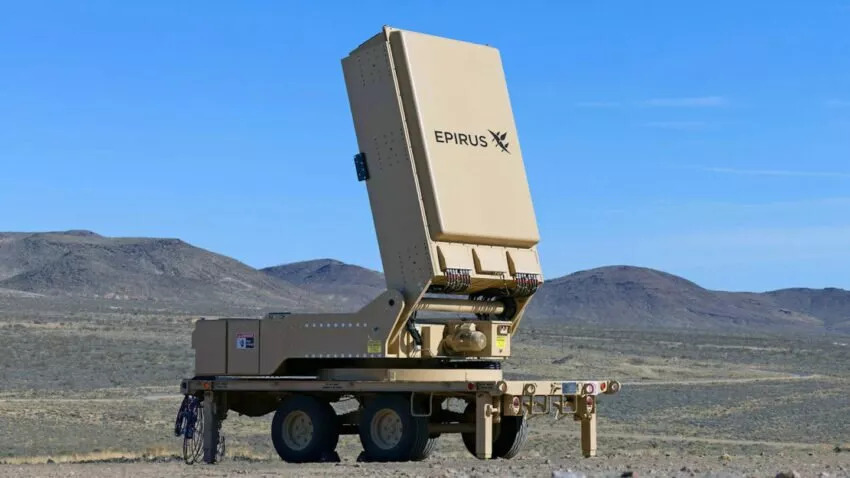Pentagon has been spurred into looking at high-power microwave weapons as an option against drones, both advanced and ordinary ones, that were used for devastating attacks on sophisticated armaments in the Russia-Ukraine and West Asia conflicts.
Russia Flaunts ‘Magic Radio’ To Shield Its FVP Drones From Jamming, Thwart Electronic Warfare Attacks
Activity in US military planning and defense industrial corridors has been high over the last two years since Ukraine pioneered using civilian drones as kamikaze UAVs and Russia introduced its Lancet loitering munition.
It acquired a distinct pace after Hamas used them against Israel, and the Houthi (Ansarallah) movement began firing drones and missiles over the Red Sea, according to a report in the Wall Street Journal (WSJ).
Once secretive and classified, high-power microwave (HPM) technology sends a dense, concentrated beam of heavily charged electrical energy on aerial threats such as drones and missiles, which heats and ‘fries’ their internal electronics.
The underlying principle and the impact on the target qualify it as a ‘non-kinetic hard-kill weapon.’ Directed Energy Weapons (DEW) like HPMs and lasers are technically more complex, costly, and power-hungry than other non-kinetic weapons like jammers.
The US has been introducing a host of counter-drone systems and is developing and inducting some HPM systems. The rapid evolution in drone technology and tactics prevents a consistent, clearly defined drone strategy.
Houthi, Russian & Hamas Drones Sent US Into Tizzy
Quoting military officials and defense industry executives, the report noted the “high stakes” for developing such technologies, given the “relatively low cost of small drones,” making them the “weapon of choice for less sophisticated armies, terrorists and militant groups” trying to overwhelm or slip through defense systems.
“Hamas has used suicide drones to attack Israel, and the Houthis have been launching drones from Yemen over the Red Sea.”

Last week, a US Navy destroyer shot down 14 Houthi drones, which subsequently led to the formation of a multinational naval force to protect merchant vessels in the Red Sea. On the other hand, advanced militaries like Russia using Iranian-origin suicide UAVs to target Ukraine’s infrastructure prompted the US to accelerate its search for new anti-drone technologies.
Pentagon officials now want the production of counter-drone platforms to increase “dramatically” — a recognition that firing “multimillion-dollar missiles to down swarms of cheap flying bombs isn’t a tenable strategy.” Prior analyses in EurAsian Times have addressed this poor cost-to-benefit ratio for air warfare over Ukrainian cities.
For instance, Ukraine often fires US$3 million Patriot PAC-3 missiles when Russia fires a roughly US$50,000 Geran-2 kamikaze drone in coordination with Iskander tactical ballistic and air-launched Kh-101 or Kh-555 cruise missiles to bait and expend Ukraine’s air defenses. A complete Patriot system, including the radar, vehicle, launcher, and missile, costs roughly US$1.1 billion.
Ukraine has picked up on this Russian feint and does not always engage all targets. But Western analysts note how it still exhausts its stockpile of advanced US and European surface-to-air missile (SAM) systems — that have come from their armories and are not manufactured in Kyiv — whenever it engages targets.
Military Men & Defense Executives Speak
The US Army’s Maj Gen Sean Gainey, who heads a cell working on counter-drone technologies, said last month at a talk held by the Center for Strategic and International Studies (CSIS): “(Technologies) like directed energy, high powered microwave, low-cost interceptors is where we want to be.”
Early in November, the US Army received the Leonidas system from Epirus and is slated to receive three more. The “high-powered microwave” (HPM) weapon has specifically been designed to tackle “drone swarms.”
RTX (formerly Raytheon) secured a three-year deal this week to design, build, and test two HPM systems for the Navy and the Air Force, with the prototypes scheduled for delivery next year.
The Air Force also used its self-developed Thor system — which fills a 20-foot shipping container — to tackle numerous drones, continuing tests that started in 2019. Likewise, Lockheed Martin has been testing its Morfius system, which fits in a small reusable drone to zap threats from close range.
No One Solution – Long Way To Go
The “ubiquity and variety” of drones in use has made defining the threat “difficult.” This begins with the lack of consensus over how many drones constituted a swarm, “which could range from just a few to dozens or more.” This also limits the capability of weapons like the HPM themselves, which possibly “wouldn’t take out every drone.”
This is owing to the high-power requirement and relatively bulky nature of DEWs like HPMs or lasers, which need a strong, reliable, and sustainable electricity supply to keep firing.
Their maintenance and logistics cost is another matter. It is likely to be complicated by the current supply chain disruption in US manufacturing and the crisis in the American defense industrial base itself, revealed in the struggle to supply Ukraine 155-mm artillery shells.
“If I have 20 incoming threats, and even if my high-power microwave can only address half of those, that’s ten fewer threats that we now need to deal with,” WSJ quotes Paul Head, the director for Next Generation Technologies at RTX.
- The author can be reached at satamp@gmail.com
- Follow EurAsian Times on Google News